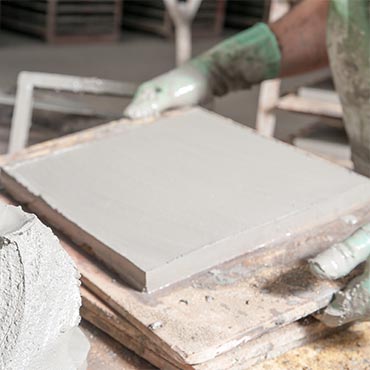Ceramic/Porcelain: Hand-Made / Handcrafted Tile

Hand-Made and Handcrafted Flooring Tile: A Timeless Choice for Modern Spaces
The world of interior design continually evolves, but some elements remain timeless in their appeal and functionality. Hand-made and handcrafted flooring tiles are one such element, boasting a rich history that has seamlessly transitioned into modern design. These tiles, known for their uniqueness and aesthetic charm, offer a blend of tradition and contemporary style, making them an ideal choice for home decorators, interior designers, and space planners.
Historical Context
Hand-made and handcrafted tiles have a storied past, dating back centuries. Initially, these tiles served functional purposes, but over time, they evolved into key design features. Each piece tells a story of the culture and era it represents, from intricately patterned Moroccan tiles to the colorful Talavera tiles of Mexico. Today, these tiles are more than just flooring options; they are pieces of art that add character and soul to any space.
Types and Features
There is a vast array of hand-made and handcrafted flooring tiles, each with distinct characteristics. These range from ceramic and porcelain to cement and stone. Their finishes vary from glossy to matte, and they come in an assortment of sizes and shapes, offering endless design possibilities. Hand-painted and glazed options provide a unique touch, ensuring no two tiles are exactly alike.
Design Flexibility
One of the most appealing aspects of hand-made tiles is their versatility in design. They can complement various themes, from rustic traditional to sleek contemporary. Designers can play with color palettes, patterns, and textures to create unique spaces. For instance, a herringbone pattern of narrow rectangular tiles can add dynamism to a modern minimalist room, while floral hand-painted tiles can enhance the charm of a country-style kitchen.
Practical Advantages
Beyond their beauty, hand-made tiles are incredibly practical. They are durable, resistant to water and stains, and easy to clean, making them ideal for kitchens, bathrooms, and high-traffic areas. Their longevity is unmatched, often lasting for decades with minimal maintenance.
Installation Tips
Proper installation is crucial to maximize both the aesthetic and functional benefits of hand-made tiles. It involves meticulous substrate preparation, precise layout planning, and, ideally, professional installation. Poor installation can lead to issues like cracking and uneven surfaces, undermining the tile's durability and appearance.
Sustainability
In today's eco-conscious world, the sustainability of hand-made tiles is a significant plus. Many are made from natural, recyclable materials and are produced in energy-efficient ways. Their long lifespan also means less frequent replacements, reducing waste.
Trends
The latest trends in hand-made and handcrafted tile design are a fusion of technology and tradition. Digital printing technologies have expanded the range of patterns and designs, while 3D textures offer a tactile experience. Innovative sizes and shapes are redefining spaces, allowing designers to create unique and personalized environments.
Real-world Applications
Recent design projects showcase the versatility of hand-made tiles. For example, a boutique hotel in Tampa has used custom-made ceramic tiles to create a vibrant, mosaic-like floor that becomes the focal point of its lobby. Another example is a residential kitchen in San Francisco, where hand-painted terracotta tiles provide a warm, earthy backdrop to modern appliances.
Conclusion
Hand-made and handcrafted flooring tiles stand out as a versatile, beautiful, and practical choice in modern interior design. They bridge the gap between past and present, offering a unique combination of historical richness and contemporary appeal. Whether you're refurbishing a classic space or designing a new one, these tiles offer an unmatched blend of style, durability, and sustainability, making them a wise investment for any design project.







